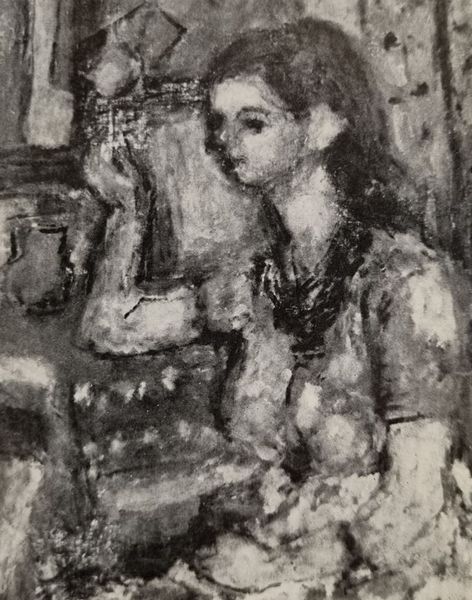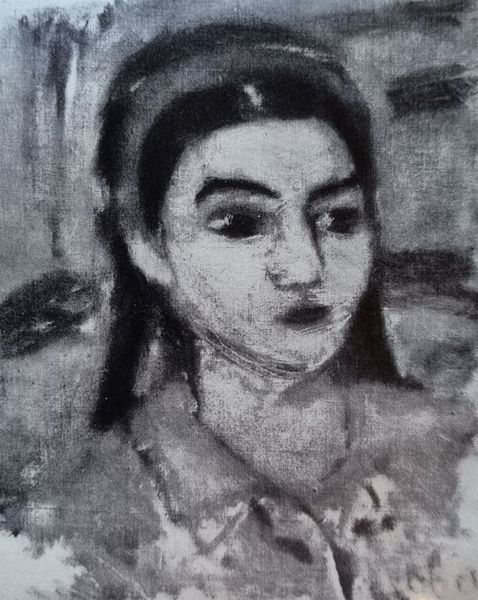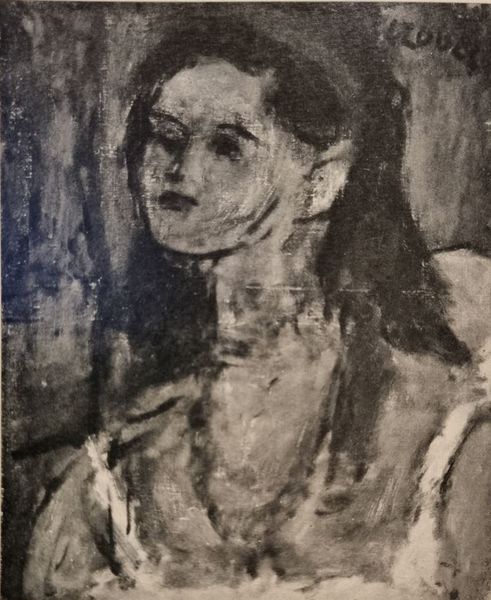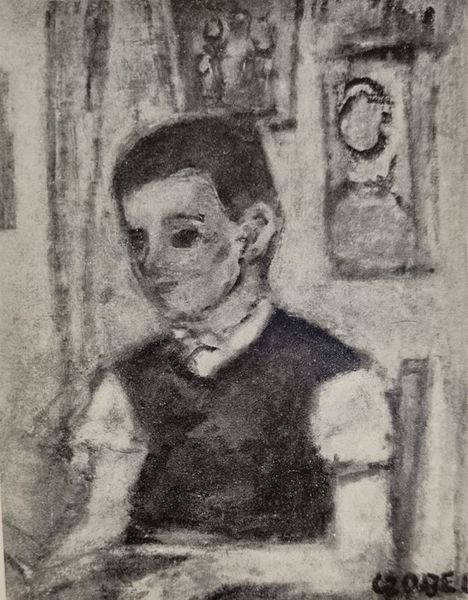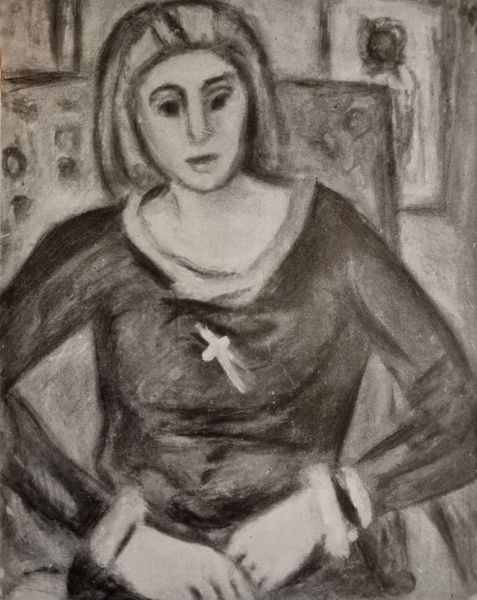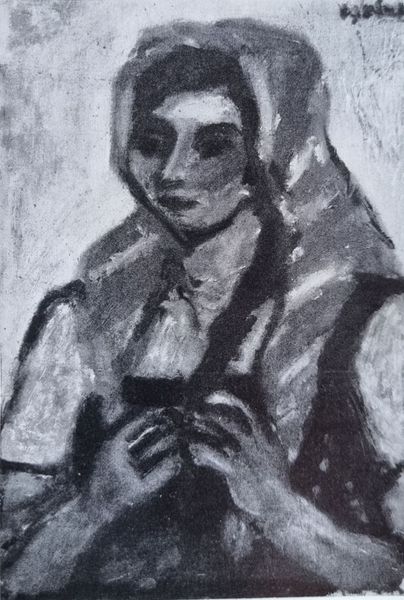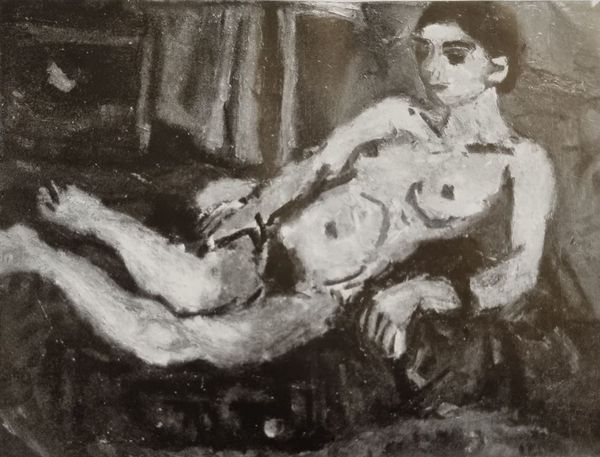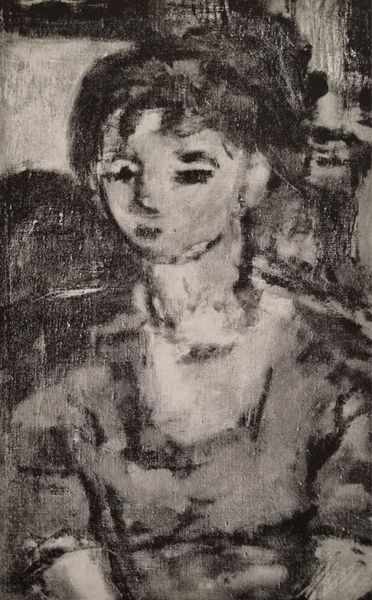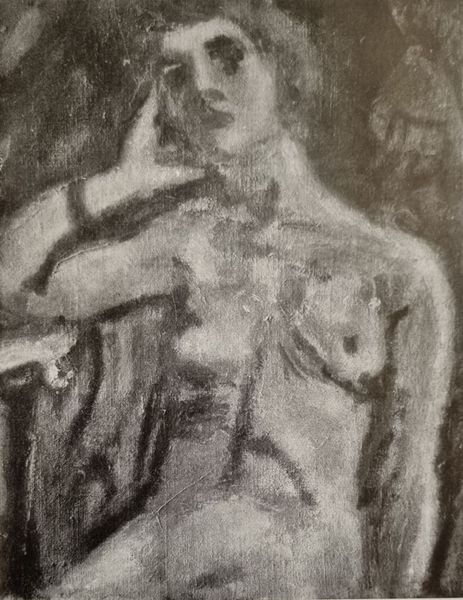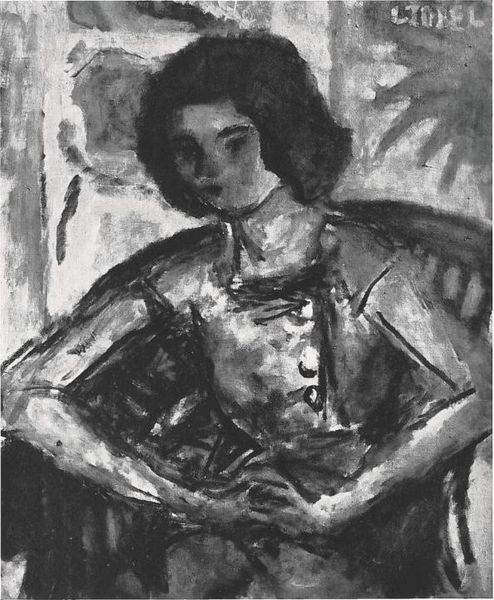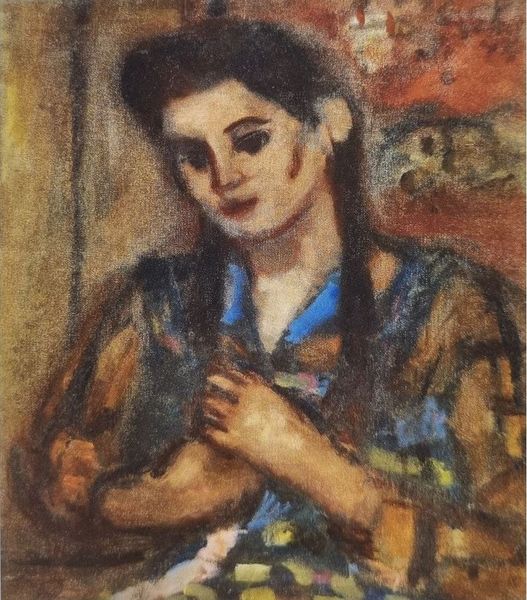
Copyright: Bela Czobel,Fair Use
Editor: This is "Czóbel Béla Női Arckép 1957," a charcoal drawing by Bela Czobel. The stark contrast really emphasizes the woman’s delicate features, but there’s a sense of unease or even sadness in her expression. How do you interpret this work? Curator: I see a reflection of post-war anxiety and a complex portrayal of female identity. Czobel, having experienced the upheavals of both World Wars, translates a collective sense of trauma onto the individual. Note the woman's gaze - averted, internal. It's not simply sadness; it suggests a world-weariness. How does this portrayal resonate with feminist perspectives on the male gaze? Editor: I hadn't thought about it in terms of the male gaze. It’s like she’s withdrawing from being seen, almost resisting objectification. The use of charcoal is interesting too, creating this ephemeral quality, like the memory of a woman rather than a concrete representation. Curator: Precisely. The medium contributes to the message. Charcoal, easily smudged and transient, can symbolize the fragility of memory and the shifting sands of identity, especially for women navigating a patriarchal society. What do you think Czobel is trying to convey about the position of women at that particular moment in history? Editor: It makes me wonder if Czobel aimed to give voice to the unspoken anxieties and experiences of women during that era. It feels like he is resisting the stereotypical representations of women that were prevalent. Curator: Exactly. He is inviting us to consider the inner lives and experiences often disregarded in broader historical narratives. He’s reminding us to acknowledge the complex realities behind seemingly simple portraiture. Editor: So much to consider, I'm walking away with a whole new view of portraiture. Curator: Indeed! Art serves as a lens through which we can critically examine societal norms and individual experiences across time.
Comments
No comments
Be the first to comment and join the conversation on the ultimate creative platform.
